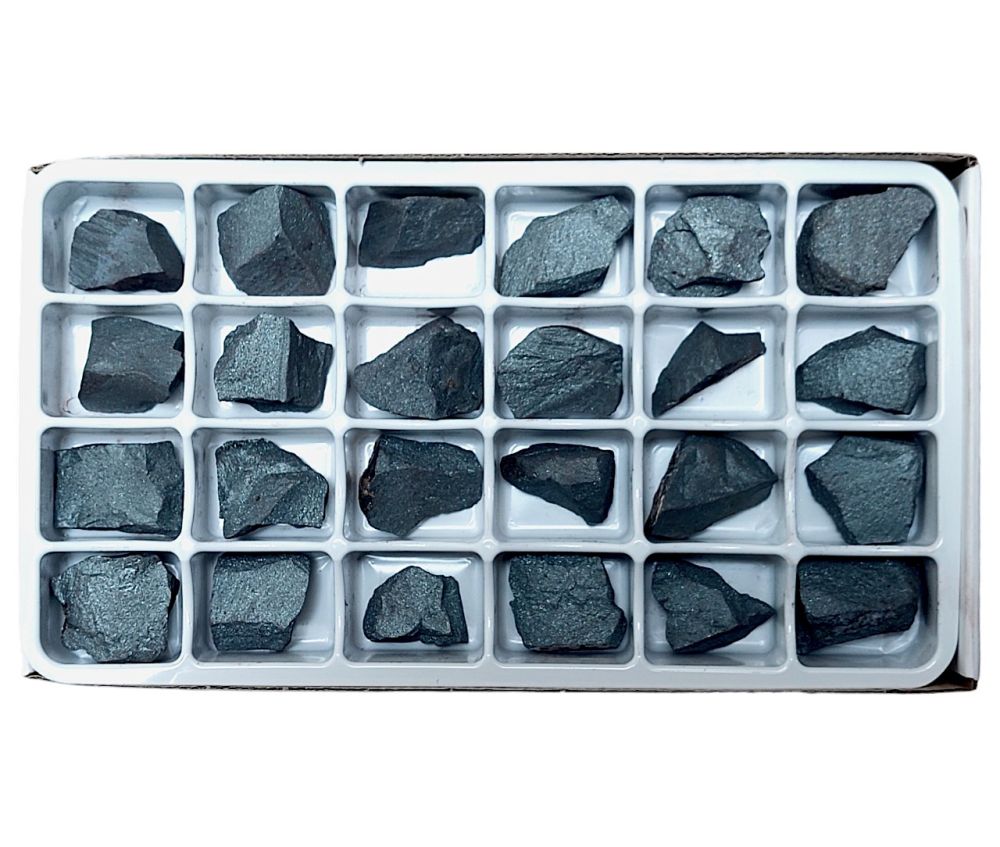We use cookies to make your experience better.
TimmersGems has a new website, existing customers also need to register again.
Hematite 24 pieces assortment box from Brazil 28x15cm.
Beautiful pieces of Brazilian Hematite in collection / assortment box of 28x15cm.
Availability:
In stock
SKU
121254
Hematite (from Greek: αιμία, haima, blood) is a mineral consisting mainly of ferric oxide crystals (iron(III) oxide, Fe2O3), one of the iron oxides. It occurs alongside other varieties such as the red bloodstone and the gray-black to black iron shine and micaceous iron. The mineral has a hardness between 5 and 6. The so-called stripe, or stripe color, the color that the mineral gives off when rubbed over an unglazed porcelain dish, is usually a characteristic blood red - the mineral takes its name from this. The mineral may contain traces of magnesium, manganese and titanium. Hematite occurs both as a corridor mineral and in sedimentary layers. It is often the cause of red coloring of many rocks. Other iron ores such as magnetite, limonite and iron spar often occur together with hematite. When magnetite is converted to hematite, it is called martite. The mineral occurs worldwide, in Europe in Germany, including in the Lahn area where there is the world's largest concentration of iron ores, in the Eifel, the Harz and in the Thuringian Forest. Furthermore, in England in Cumberland and North Lancashire, in Belgium in Vezin and Namur, on the Italian island of Elba and in Spain. In Africa, Algeria is a notable producer and in the United States of America it is found near the Upper Lake and the Missouri. More than half of world production now comes from China, Brazil and Australia. In addition, the mineral also occurs in high concentrations on the surface of the planet Mars. This creates the typical orange-red color of the 'Red Planet'. In its pure state, hematite consists of 70% iron and is therefore the most important iron ore. Iron is extracted by reacting it with carbon at a high temperature. In addition, hematite is used as a polishing agent and, because of its high reflection, as a mirror for a long time. The red color and the fact that hematite is not toxic make the mineral very suitable as a pigment. Already in the Stone Age it was used for petroglyphs and body paintings. Artists use pressed hematite markers for drawings and sketches. Such markers are soft and color well. Red bolus, a strongly clay-containing type of hematite, is often used as a base layer for gilding. As a pigment, hematite is suitable for painting ceramics and dyeing carpet threads.
| Dimensions | 28x15cm |
|---|---|
| Country of Manufacture | Brazil |












